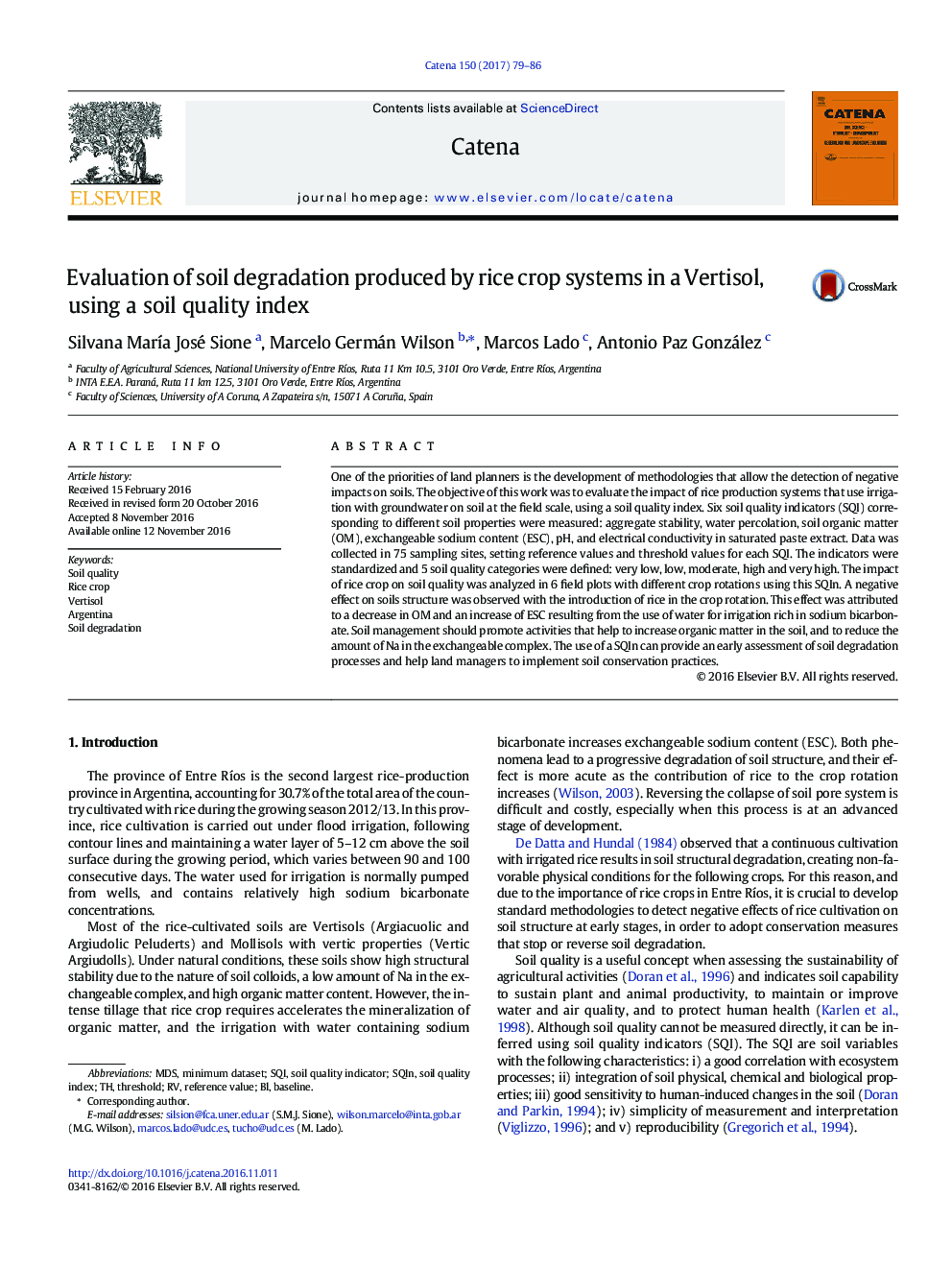| کد مقاله | کد نشریه | سال انتشار | مقاله انگلیسی | نسخه تمام متن |
|---|---|---|---|---|
| 6407637 | 1629204 | 2017 | 8 صفحه PDF | دانلود رایگان |
- Rice crop generates negative impact on SQ, to increase their participation in rotation.
- SQ decrease by reduction of SOM and sodium-bicarbonate from irrigation water applied.
- Sodification is magnified by the large volumes of water applied and soil clays type.
- The addition of one more year of rice in the rotation crop was enough to reduce SQ.
- Vertisol showed self-reclamation capacity to the practice of crop non-irrigated.
One of the priorities of land planners is the development of methodologies that allow the detection of negative impacts on soils. The objective of this work was to evaluate the impact of rice production systems that use irrigation with groundwater on soil at the field scale, using a soil quality index. Six soil quality indicators (SQI) corresponding to different soil properties were measured: aggregate stability, water percolation, soil organic matter (OM), exchangeable sodium content (ESC), pH, and electrical conductivity in saturated paste extract. Data was collected in 75 sampling sites, setting reference values and threshold values for each SQI. The indicators were standardized and 5 soil quality categories were defined: very low, low, moderate, high and very high. The impact of rice crop on soil quality was analyzed in 6 field plots with different crop rotations using this SQIn. A negative effect on soils structure was observed with the introduction of rice in the crop rotation. This effect was attributed to a decrease in OM and an increase of ESC resulting from the use of water for irrigation rich in sodium bicarbonate. Soil management should promote activities that help to increase organic matter in the soil, and to reduce the amount of Na in the exchangeable complex. The use of a SQIn can provide an early assessment of soil degradation processes and help land managers to implement soil conservation practices.
Journal: CATENA - Volume 150, March 2017, Pages 79-86
